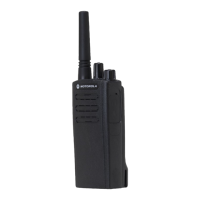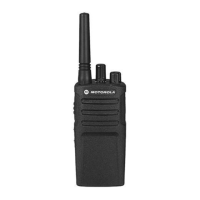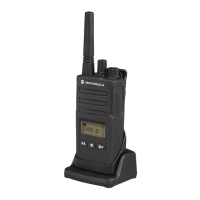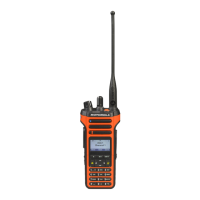Advanced Features
English
28
Deleting a Nuisance Channel
If a channel continually generates unwanted calls or noise
(termed a “nuisance” channel), you can temporarily remove the
unwanted channel from the scan list.
This capability does not apply to the channel designated as the
Selected Channel.
Procedure:
1 When your radio “locks on to” an unwanted or nuisance
channel, press the programmed Nuisance Channel Delete
button until you hear a tone.
2 Release the Nuisance Channel Delete button. The
nuisance channel is deleted.
Deleting a “nuisance” channel is only possible through the
programmed Nuisance Channel Delete button. This feature is
not accessible through the menu.
Restoring a Nuisance Channel
Procedure:
To restore the deleted nuisance channel, do one of the
following:
• Power the radio off and then powering it on again, OR
• Stop and restart a scan via the programmed Scan button or
menu, OR
• Change the channel via the Channel Selector Knob.
Contacts Settings
Contacts provides “address-book” capabilities on your radio.
Each entry corresponds to an alias or ID that you use to initiate
a call.
Additionally, each entry, depending on context, associates with
one of five types of calls: Group Call, Private Call, All Call, PC
Call or Dispatch Call.
PC Call and Dispatch Call are data-related. They are only
available with the applications. Refer to the data applications
documentation for more information.
NOTE: If the Privacy feature is enabled on a channel, you can
make privacy-enabled Group Call, Private Call, and All
Call on that channel. Only target radios with the same
Privacy Key as your radio will be able to unscramble
the transmission. See Privacy on page 50 for more
information.
Your radio supports two Contacts lists, one for Analog contacts
(with a maximum of 128 members) and one for Digital contacts
(with a maximum of 256 members).
Each entry within Contacts displays the following information:
• Call Type
• Call Alias
• Call ID
NAG-LACR-EMEA.book Page 28 Monday, April 28, 2008 4:59 PM

